Ever wonder who those little tracks in the snow belong to?
Me, too, every time I’m out on a winter trail. I like to think I can recognize deer and sparrow tracks, and maybe rabbit and squirrel prints if I’m lucky, but that’s being generous. I’ve always had the sense there’s a whole world of chirping, burrowing, skittering creatures just out of my range of vision, and felt sorry that I couldn’t read the tale their footprints left behind.
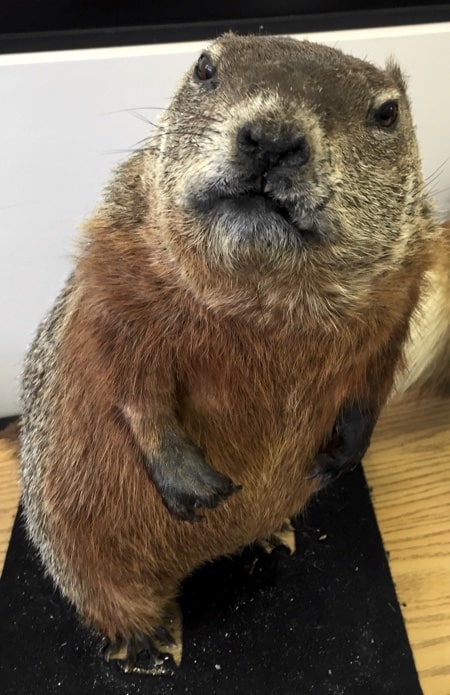
This groundhog looks a little grumpy. Perhaps he’s mad about this winter’s weather, too. Photo by Laura Byrne Paquet.
So when I found out that Gatineau Park was offering free animal tracking snowshoe outings every weekend, I was stoked. Finally, some clues to cracking the code—and at my favourite price! The icing on the cake was that it was also a chance to snowshoe, since I’d recently rediscovered snowshoeing on a trip to the Adirondacks.
I’ve been hoping to get up there for weeks, but the deep-freeze weather had given me pause. Today’s forecast looked promising, so I reserved a spot and headed out.
First, I have to say: why do I always forget how close Chelsea is? Just a 25-minute drive from my home in Ottawa, I was pulling into the parking lot of the Gatineau Park Visitor Centre. We are mind-boggling lucky to have this vast preserve in our backyard.
Thirteen of us gathered in the Lynx Room for an introduction to animal tracking from our fun and engaging guide, Michelle Hegge. During the week, she teaches outdoor skills to preschoolers, so she was easily able to engage us in lots of Q&A fun (although, unlike her younger charges, we didn’t automatically assume that all tracks belonged to dinosaurs).
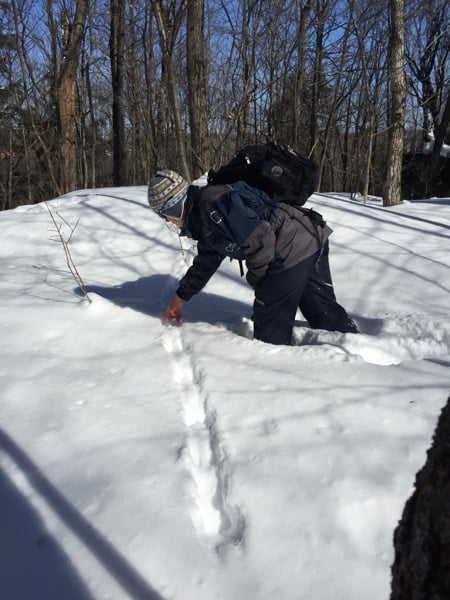
The big clue you may have spotted squirrel tracks: they stop at a tree (where the squirrel climbed up). Photo by Laura Byrne Paquet.
Hegge explained that tracks fall into four patterns: slightly overlapping diagonal pairs (humans, dogs, cats, deer); lopsided pairs made by “waddlers” (low-slung critters like raccoons and porcupines); patterns with four paws close together made by “bounders” (long animals that leap from spot to spot, like weasels and fishers); and straight lines sometimes revealing rear paws landing ahead of front ones (rabbits, squirrels, mice, voles). She added that a small animal can leave a misleadingly large print, if the snow is high and fluffy, or the track is old.
Next it was time for a bit of show and tell with some taxidermied forest friends, since the odds were against us seeing any live ones on the trail. (Animals, naturally enough, tend not to congregate near large groups of humans squeaking through the snow like rainbow-coated Storm Troopers.)
Those who didn’t bring their own snowshoes signed out free pairs from the visitor centre, and then we all headed outside to put on our footwear and hit the trail just beyond the visitor centre parking lot. Actually, as Hegge pointed out, one of the joys of snowshoeing is that you can go off the trail. That’s forbidden in summer, as it’s easier then to disturb fragile plants and skittish animals.
Off the trail we gleefully went. And within five minutes, I’d smacked my noggin on a low-hanging branch. It wasn’t that I didn’t see it or consciously try to duck under it. It’s just that my usual poor spatial perception did me in.
Head aching but undaunted, I tromped up a small hill along with the rest of the group. (Side note: If you are a bit out of shape, like I am, I’d strongly advise investing in a pair of lightweight poles. Not only do they help you get a full-body workout, but they’re wonderfully handy when you’re on an incline and need a little extra help levering yourself up. I was grateful for mine several times today.)
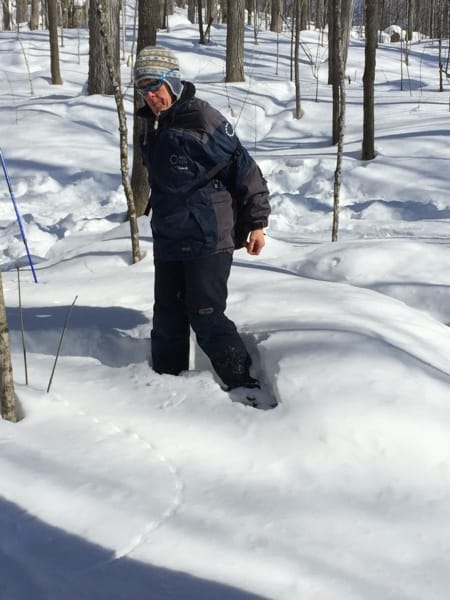
OK, gang, what animal made these? (Kudos to you if you guessed “shrew.”) Photo by Laura Byrne Paquet.
Soon, Hegge was pointing out our first set of tracks: a semi-circular trail of tiny prints that we collectively decided, with much coaching from Hegge, could belong to a wee shrew. From her knapsack—which seemed to have the capacity of a magician’s top hat—she extracted a taxidermied shrew, which we passed around and admired. Cute little guy.
As the next 90 minutes flew by, the cool facts came thick and fast.
Hegge pointed out bear claw marks in a beech tree, and I learned a number of useful things.
- Beech trees are those trees with smooth grey trunks like elephant legs. (My horticultural knowledge isn’t stellar, either.)
- In warmer months, bears like to perch high in beech trees eating nuts. (Note to self: Look up when passing elephantine trees in summer.)
- In winter, in the highly unlikely event you do see a bear, he or she won’t be hungry. (A natural hair plug develops in their intestines over the winter, meaning that they can’t, um, poop, so they’re also not inclined to eat. Gross, but reassuring.)
We also stopped at a tree that a pileated woodpecker had gouged. Hegge had us imitate a woodpecker’s head movements for 10 quick pecks. “How does that feel? Not good, right?” she asked. Yeah, it made me a little dizzy.

If you did happen to see a pileated woodpecker in the wild, he’d look like this. Photo by Laura Byrne Paquet.
Unlike humans, woodpeckers can peck all day because there’s a layer of gel between their brains and their skulls, like a natural hockey helmet, Hegge explained. Who knew?
We learned about yellow-bellied sapsuckers and snowshoe hares, foxes and deer, and even rarely spotted animals like lynx and wolverines. We talked about why deciduous trees lose their leaves (it’s an energy-saving measure). And here’s the coolest thing I learned all day: do you know why snowshoe hares and other animals turn white in the winter? We all guessed “camouflage,” and that’s partly right, but here’s the kicker: white hairs and feathers are hollow, while coloured ones are filled with pigment. So on cold days, all the air in those white hairs and feathers helps keep the animals warm.
Given the frosty winter we’ve been having, maybe I should stop dyeing my roots after all.
Want more tips on road trips from Ottawa—including info on hotel discounts, contests, festivals and other cool news? Subscribe to our free weekly e-newsletter! We will never spam you—promise.
If you go
Tours run no matter what the weather, but they’re only available until March 15, so act quickly if you want to take one. English tours leave at 10:30am on Saturdays and 1:30pm on Sundays, while French tours leave at 1:30pm on Saturdays and 10:30am on Sundays. Reserve in advance to make sure there’s space. Tours leave from the Gatineau Park Visitor Centre at 33 Scott Road, Chelsea, Quebec.

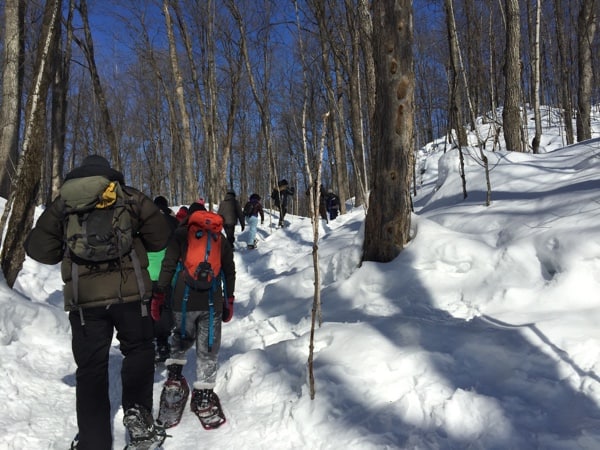
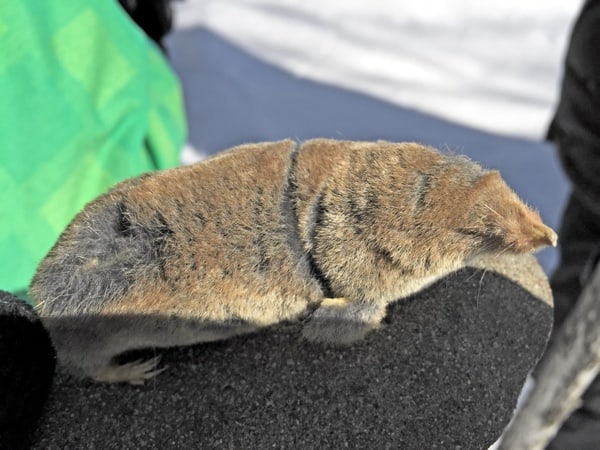
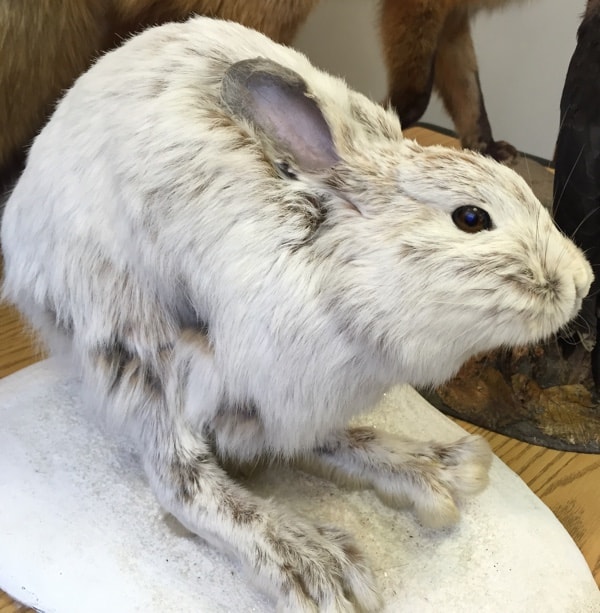
2 comments
Hi Laura,
Great article! One small correction… the animal featured at the beginning is a groundhog- not a beaver. The faces look very similar and almost everyone makes the same mistake!
Hi Michelle,
Oops! Sorry about that. Thanks so much for the correction. I’ll fix this right away. Guess I need to come back and take a remedial class! 🙂
Cheers,
Laura